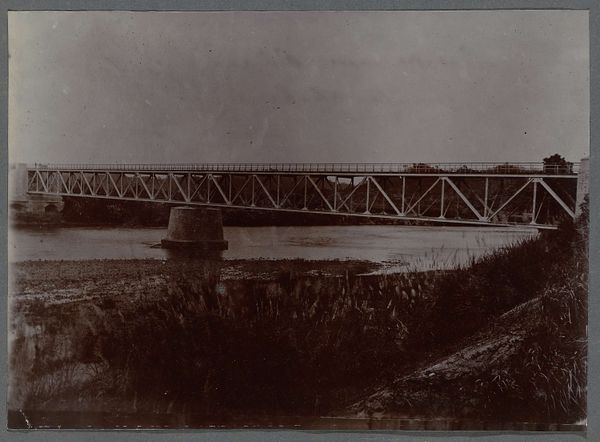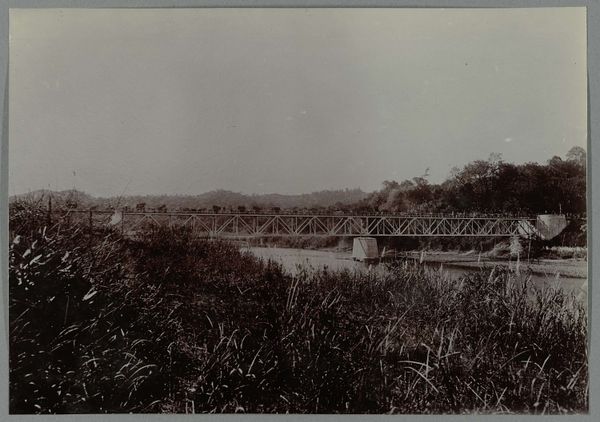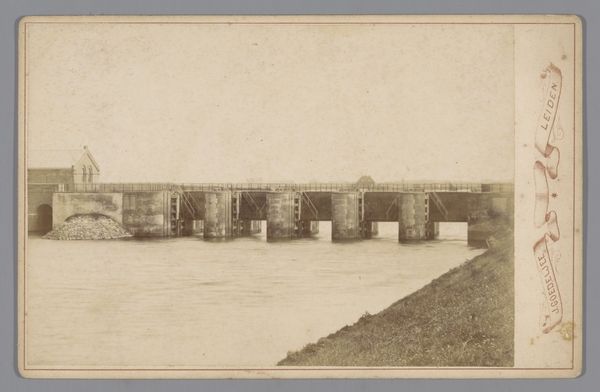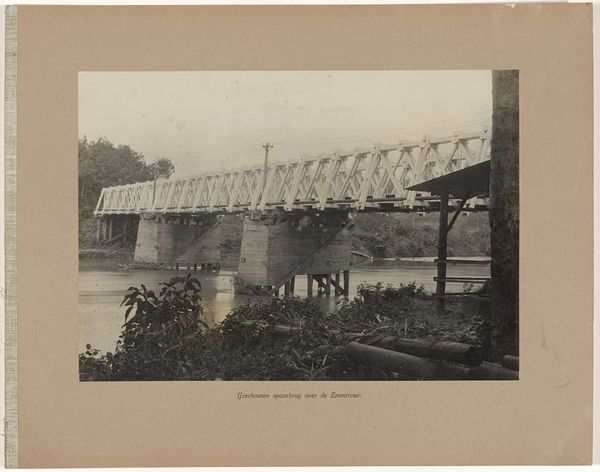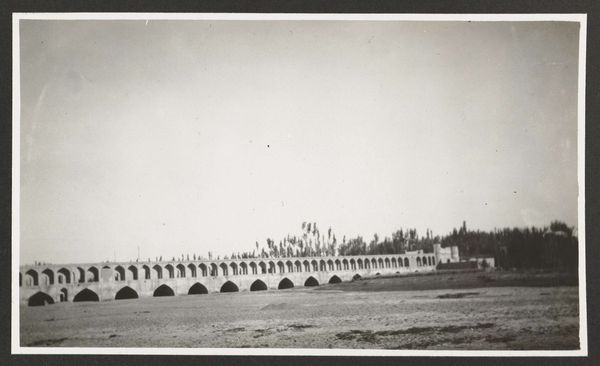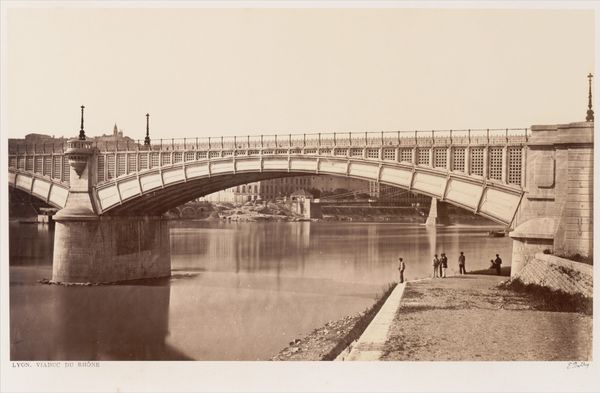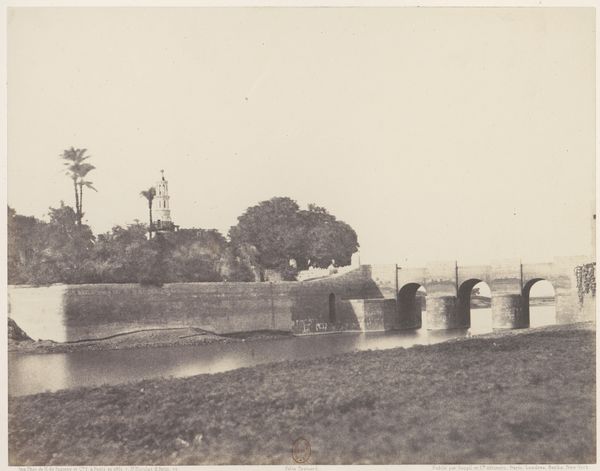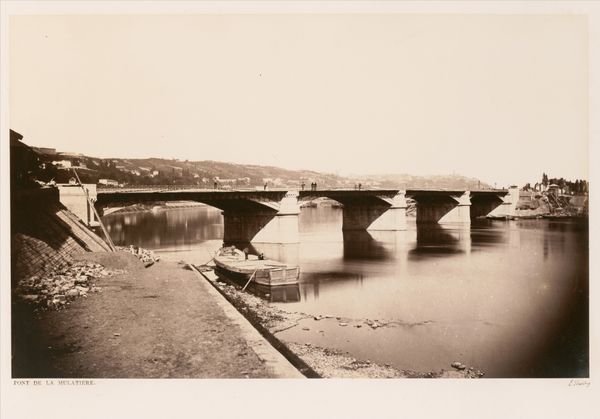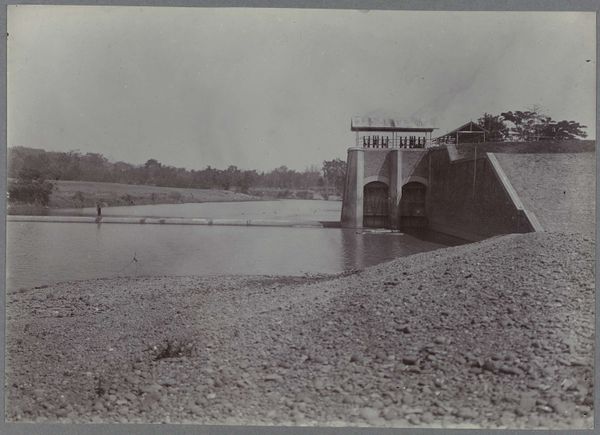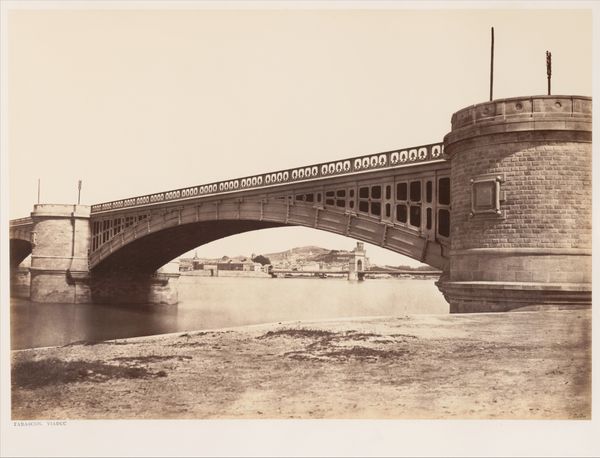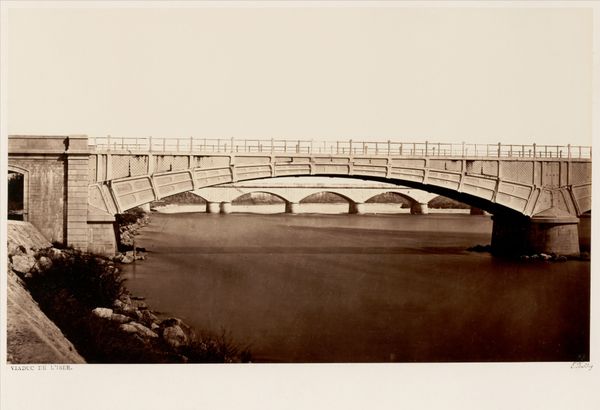
Railway bridge across the Yamuna river at Prayagraj (Allahabad), Uttar Pradesh, India 1865 - 1874
0:00
0:00
print, photography, albumen-print
# print
#
landscape
#
outdoor photography
#
photography
#
orientalism
#
monochrome photography
#
albumen-print
Dimensions: height 196 mm, width 322 mm, height 366 mm, width 415 mm
Copyright: Rijks Museum: Open Domain
Editor: What an incredible vista! The almost perfect symmetry in this monochrome print draws you in—but with such heavy infrastructure looming over it. There's a definite push and pull there for me. Curator: Indeed. This is Samuel Bourne's "Railway bridge across the Yamuna river at Prayagraj", formerly Allahabad, in Uttar Pradesh, India. The photo, an albumen print, dates to between 1865 and 1874, a key moment in British colonial engineering. Editor: Albumen... using egg whites to bind the photographic chemicals to the paper. You can really sense the hand of the artisan in it. The labor intensiveness must have been huge for an image of this scale. And that industrial imposition on the landscape... Curator: Absolutely. Consider the symbolic weight of this bridge. It represents not only technological prowess but also the imposition of colonial power structures, radically changing trade, travel, and the lives of people in the region, furthering British control and resource extraction. Editor: I am wondering about the original cost to manufacture it with colonial manpower against Indian labor. Curator: The railway network’s expansion, of which this bridge was a significant part, deeply impacted local economies. While facilitating the movement of goods and people, it also opened up Indian markets to British industries and exports. Think about indigenous industries which struggled against mass produced textiles. Editor: Right, so this photogenic view obscures complex social, and economic ramifications under a seemingly serene surface, where all materials have political charge to some degree? Curator: Precisely! Bourne’s photographic gaze, which contributed to a certain kind of orientalist aesthetic, romanticized colonial infrastructure without fully confronting the exploitation inherent in its creation. Editor: Seeing through that lens helps understand the many-layered reality beneath even the most straightforward landscape view. It also changes our perceptions of photography. Curator: Understanding those layers helps contextualize images like Bourne's and acknowledge how they shape our understanding of a complicated history. Editor: Definitely changes my perspective. Thanks for bringing it to light.
Comments
No comments
Be the first to comment and join the conversation on the ultimate creative platform.
